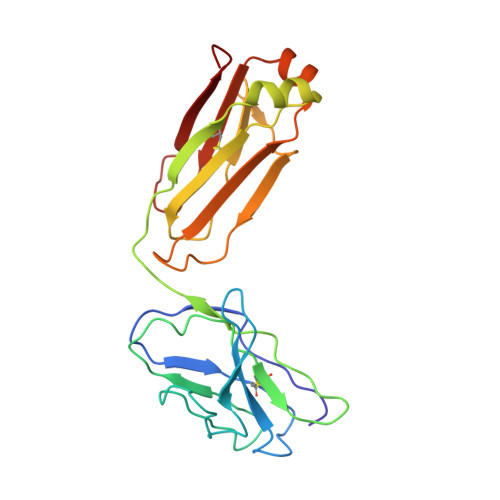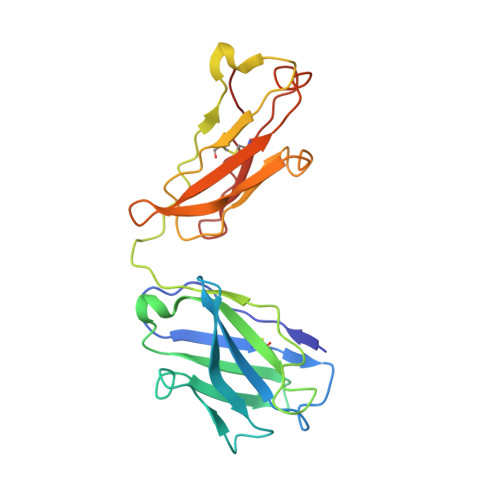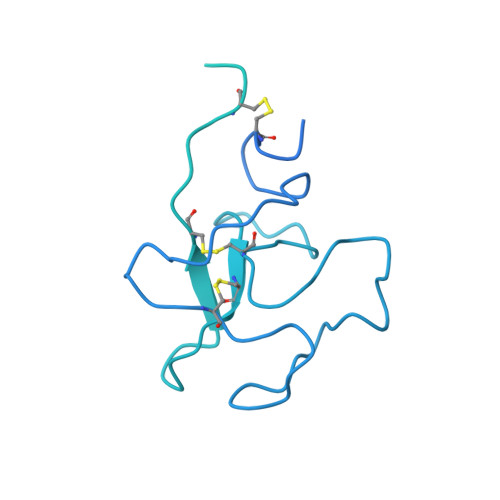Cryo-EM structure and functional basis of prothrombin recognition by a type I antiprothrombin antiphospholipid antibody.
Kumar, S., Summers, B., Basore, K., Pengo, V., Flaumenhaft, R., Pozzi, N.(2024) Blood 143: 2005-2011
- PubMed: 38437497
- DOI: https://doi.org/10.1182/blood.2023022942
- Primary Citation of Related Structures:
8UF7 - PubMed Abstract:
Antiprothrombin antibodies are found in antiphospholipid patients, but how they interact with prothrombin remains elusive. Prothrombin adopts closed and open forms. We recently discovered type I and type II antibodies and proposed that type I recognizes the open form. In this study, we report the discovery and structural and functional characterization in human plasma of a type I antibody, POmAb (prothrombin open monoclonal antibody). Using surface plasmon resonance and single-molecule spectroscopy, we show that POmAb interacts with kringle-1 of prothrombin, shifting the equilibrium toward the open form. Using single-particle cryogenic electron microscopy (cryo-EM), we establish that the epitope targeted by POmAb is in kringle-1, comprising an extended binding interface centered at residues R90-Y93. The 3.2-Å cryo-EM structure of the complex reveals that the epitope overlaps with the position occupied by the protease domain of prothrombin in the closed state, explaining the exclusive binding of POmAb to the open form. In human plasma, POmAb prolongs phospholipid-initiated and diluted Russell's viper venom clotting time, which could be partly rescued by excess phospholipids, indicating POmAb is an anticoagulant but exerts a weak lupus anticoagulant effect. These studies reveal the structural basis of prothrombin recognition by a type I antiphospholipid antibody and uncover an exciting new strategy to achieve anticoagulation in human plasma.
Organizational Affiliation:
Edward A. Doisy Department of Biochemistry and Molecular Biology, Saint Louis University School of Medicine, St. Louis, MO.
















